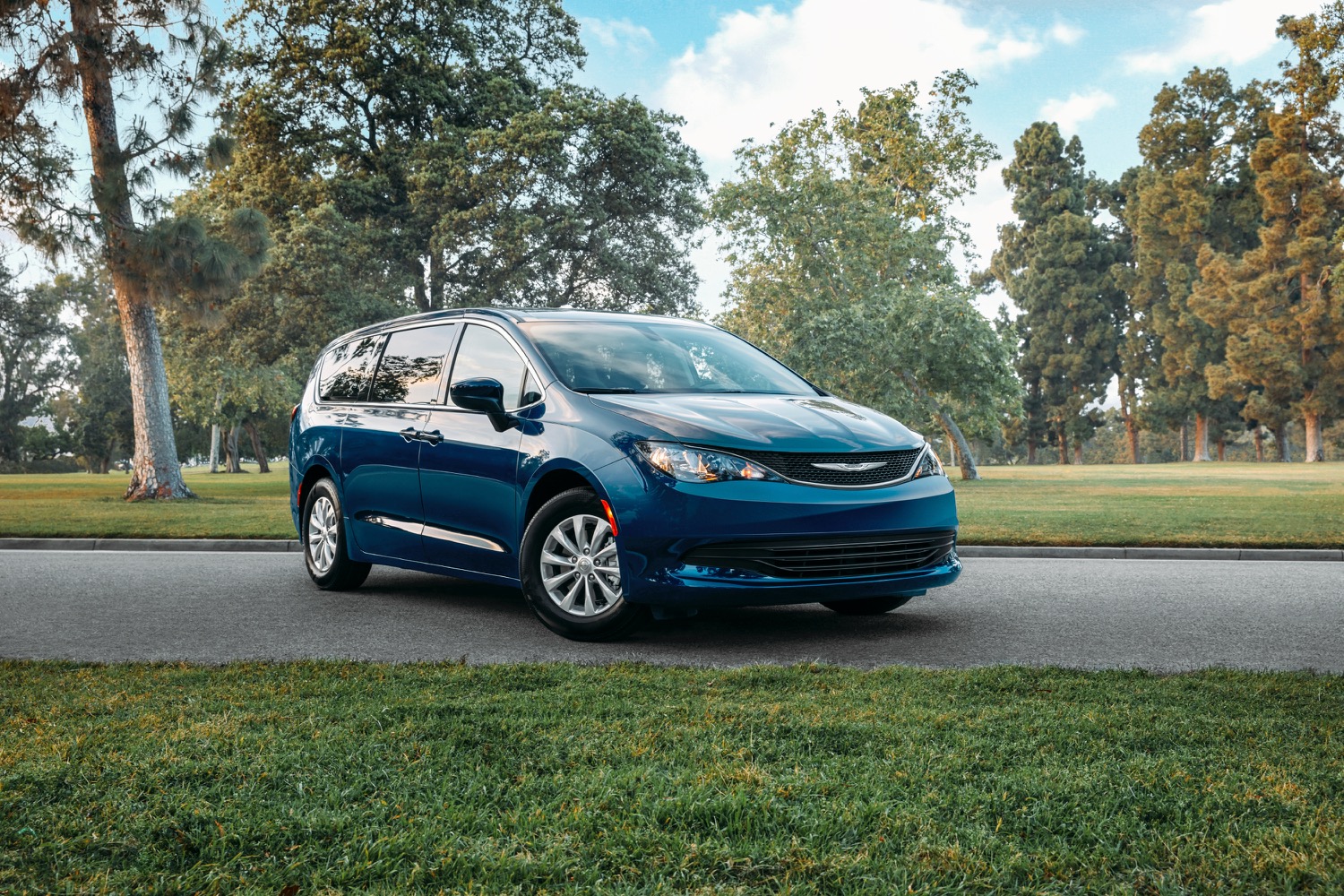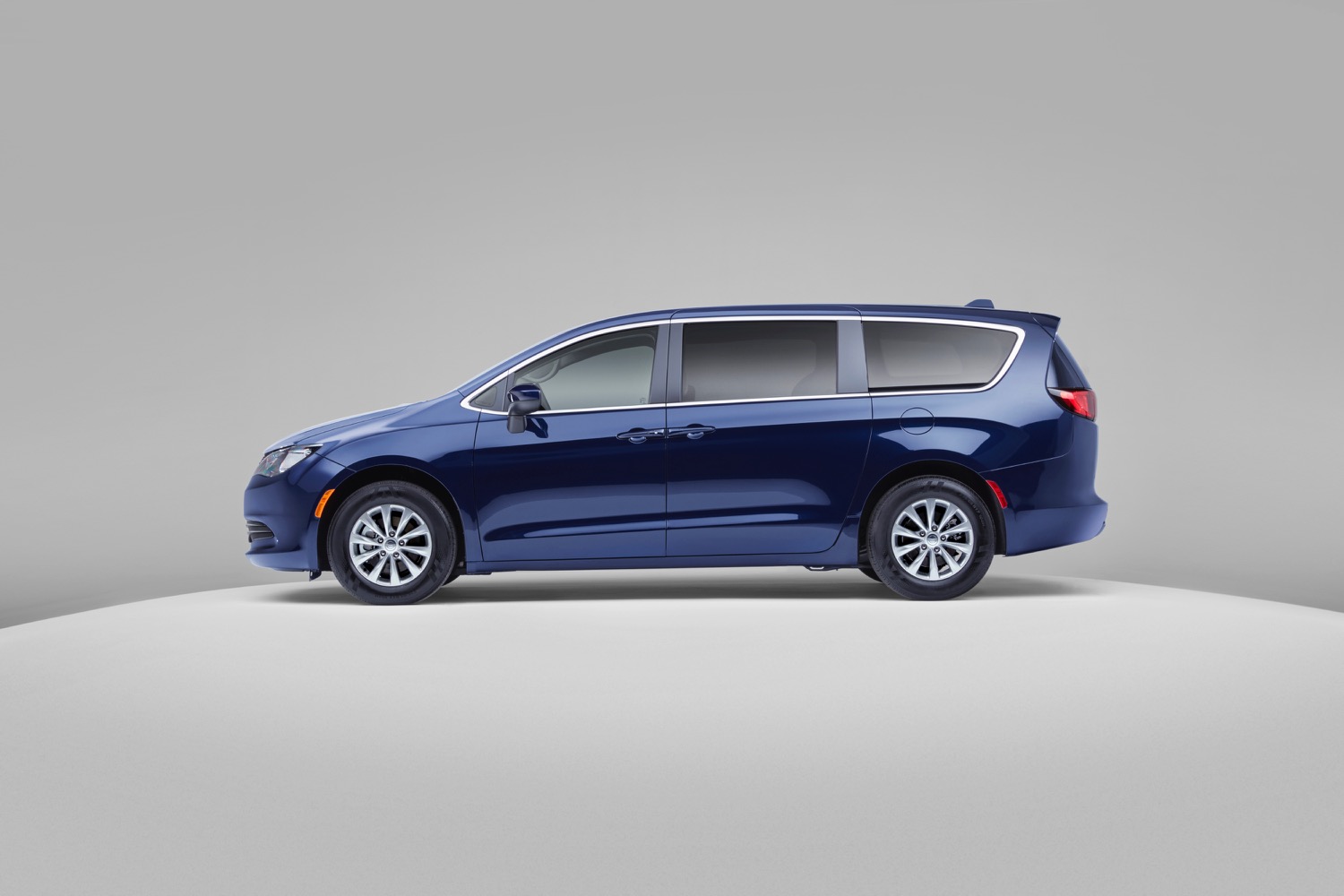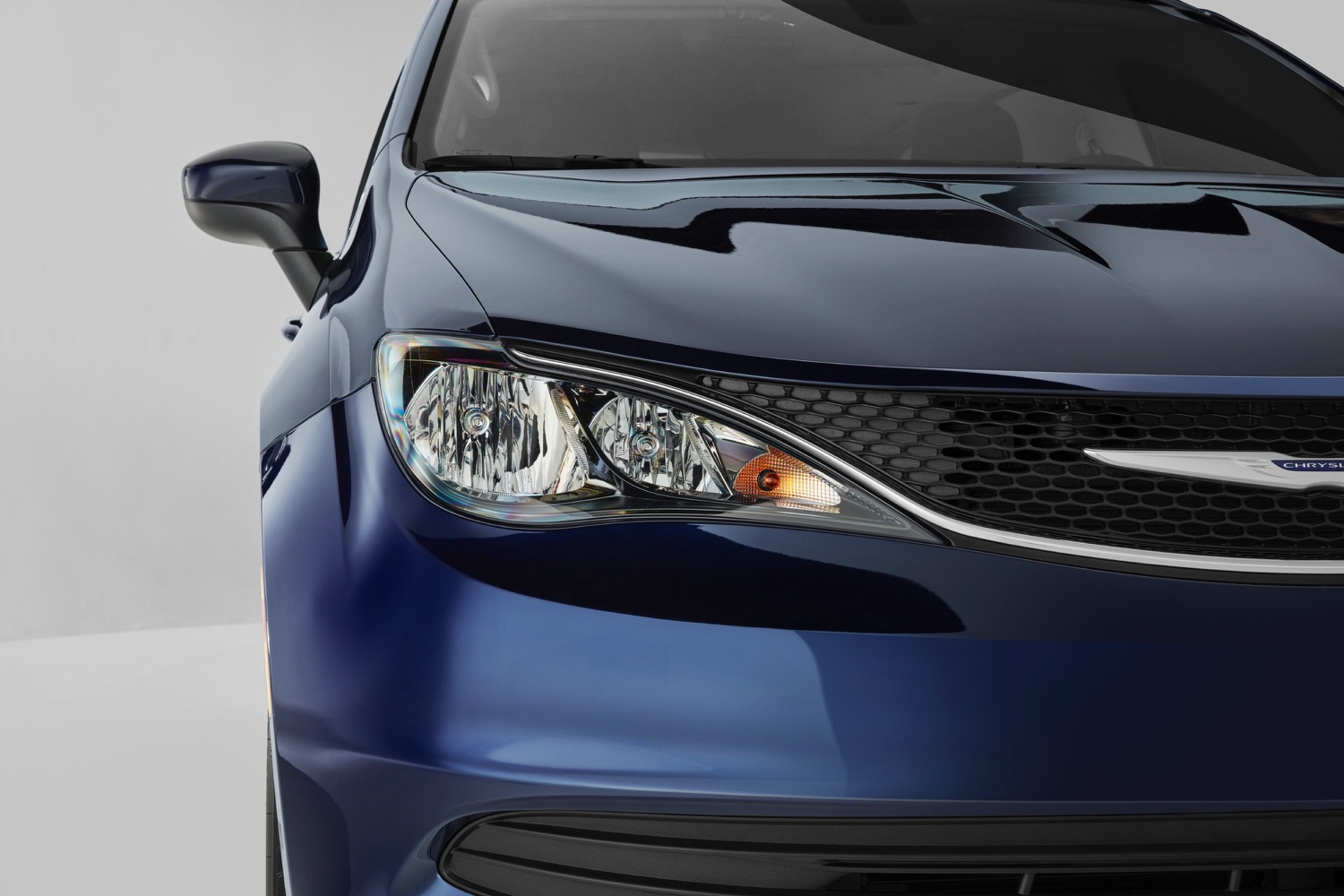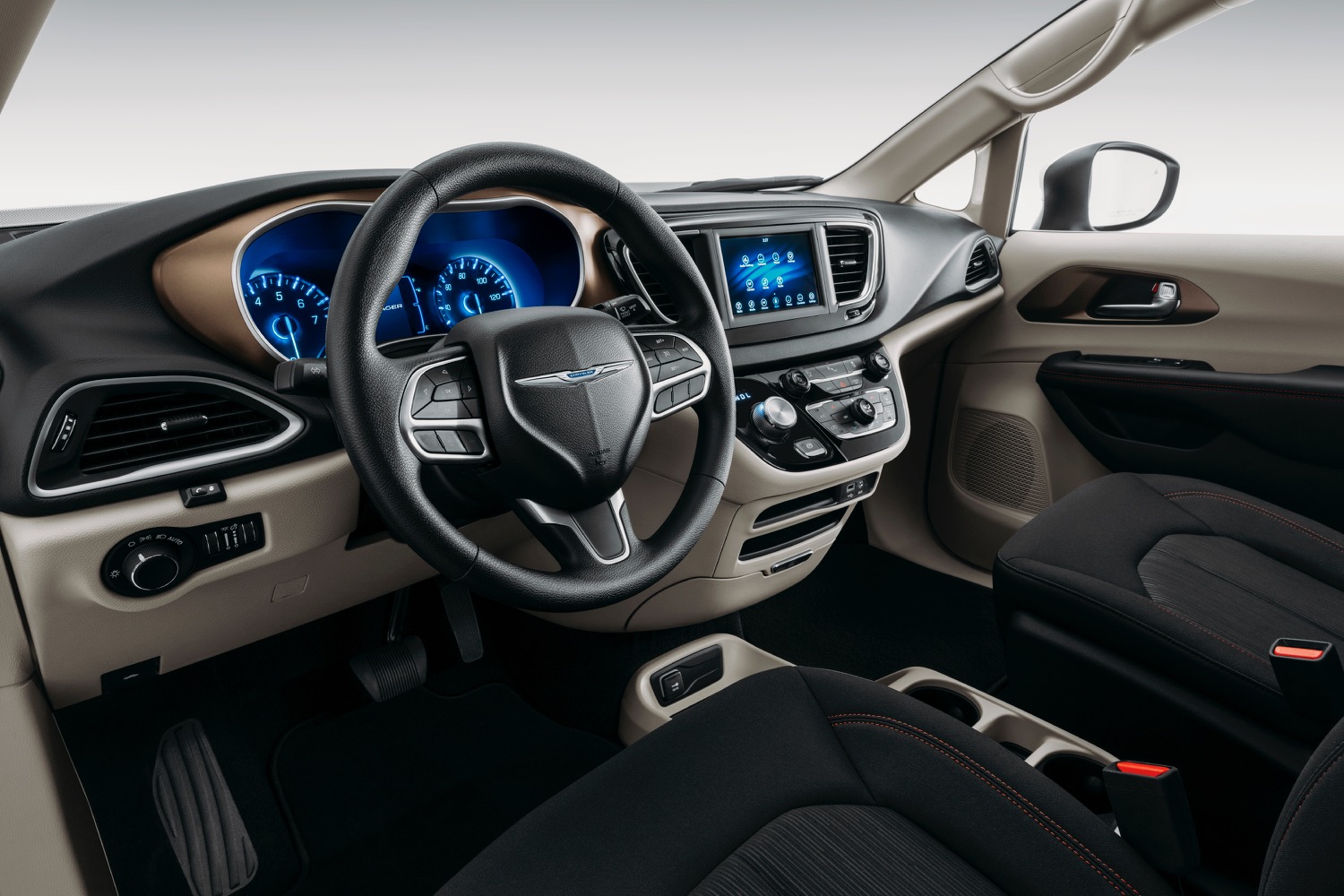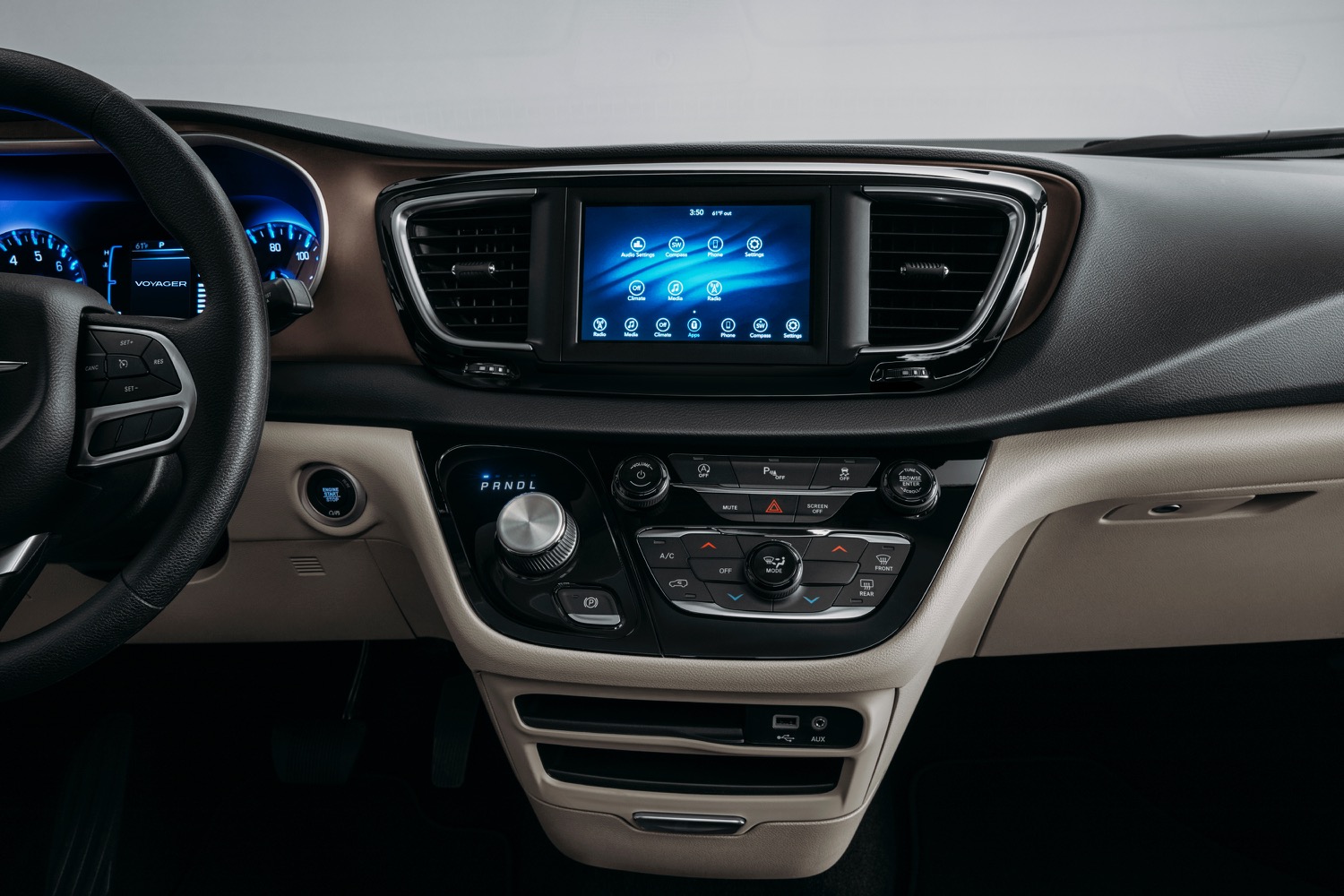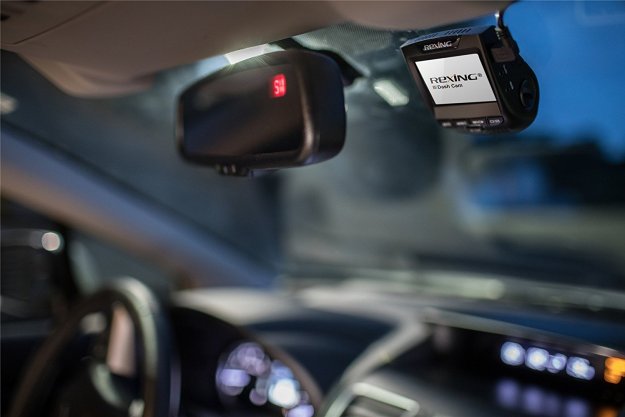If you’re a child of the ’90s, there’s a good chance the name Voyager means something to you. Two decades ago, Star Trek: Voyager was on the air, and minivans named Voyager were a common sight on the road, first badged as Plymouths, then as Chryslers. But while the starship Voyager eventually made it back to Earth, the Chrysler Voyager became lost in obscurity. Now the Voyager is back for the 2020 model year as Chrysler’s new entry-level minivan nameplate.
The 2020 Chrysler Voyager is not a separate model. It replaces the base L and LX trim levels of the Chrysler Pacifica, with similar levels of equipment. The base Voyager L comes standard with a 7.0-inch Uconnect touchscreen infotainment system compatible with Apple CarPlay and Android Auto. The six-speaker audio system sounds pretty basic, but does include active noise cancellation to help mask unpleasant road noises. The Voyager LX model adds satellite radio and in-floor storage bins. An optional SafetyTec Group package adds park assist, blind spot monitoring, and rear cross traffic alert, but the Voyager misses out on autonomous emergency braking, which is being added to the Pacifica for the 2020 model year.
The Voyager gets standard seven-row seating, but Chrysler’s clever Stow ‘n’ Go system is only listed as available on the fleet-only LXi trim level. The LXi, which also adds features like leatherette seats, remote start, and an auto-dimming rearview mirror, won’t be available in dealerships. Stow n’ Go, which is standard on gasoline versions of the Chrysler Pacifica, allows seats to fold into cavities in the floor to create a larger, flat cargo area.
The Voyager’s sole engine option is the familiar Chrysler Pentastar V6, making 287 horsepower and 262 pound-feet of torque. The V6 is mated to a nine-speed automatic transmission with front-wheel drive. The same engine is used in the Pacifica, but that higher-level model is also available with a plug-in hybrid powertrain. The only plug-in hybrid minivan on the market, the Chrysler Pacifica Hybrid (Chrysler doesn’t use “plug-in” in the official name) boasts 32 miles of electric-only range.
Chrysler said the Voyager was designed with budget-conscious buyers in mind, but declined to specify a price. It’s likely that the Voyager will be priced close to the $28,730 of a 2019 Chrysler Pacifica L. Chrysler has sold more than 14.6 million minivans since 1983, which the automaker claims is twice as many as any other manufacturer. The Chrysler brand has become reliant on minivan sales, as the aging 300 sedan is its only other product. But interest in minivans has decreased as families have migrated to SUVs.
